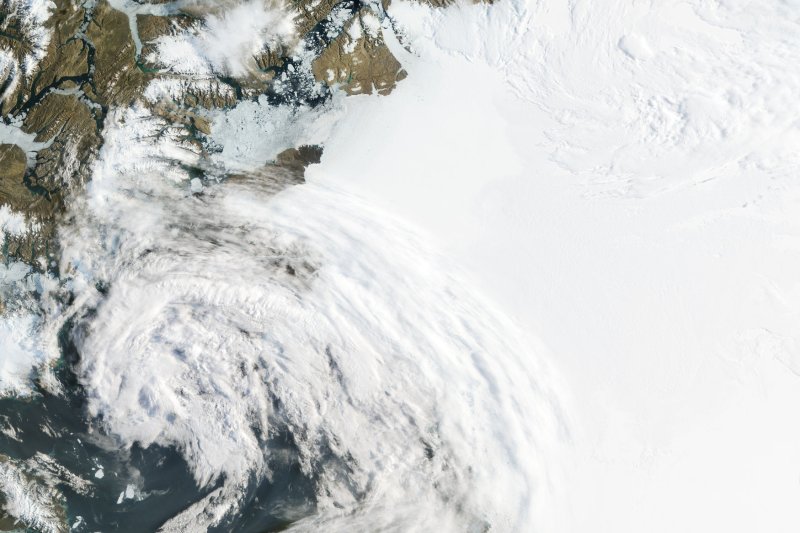Like the Jakobshavn Glacier, the Petermann Glacier grinds and slides toward the sea along the coast of Greenland, terminating in a giant floating ice tongue. Like other glaciers that end in the ocean, Petermann periodically calves icebergs. The Moderate Resolution Imaging Spectroradiometer, or MODIS, on NASAÕs Aqua satellite observed the new iceberg calving and drifting downstream on July 16Ð17, 2012. (UPI/NASA) |
License Photo
ILULISSAT, Greenland, Feb. 4 (UPI) -- Jakobshavn Glacier, one Greenland's largest outlet glaciers and an important measuring stick for scientists tracking global warming, is flowing at a world record pace. That according to a new study published in science journal Cryosphere this week.
The study, carried out by scientists at the German Space Agency (DLR) and the University of Washington, measures the glacier's speed at 150 feet (or 46 meters) per day. That's 11 miles (or 17 km) per year, quadruple the rate at which the glacier sank into the sea from 1990 to 2012.
While a human standing on the Jakobshavn Glacier would be hard-pressed to notice any movement, satellite imagery helped scientist plot the glacier's flow. And by glacial standards, Jakobshavn's speed is cheetah-like.
"As the glacier moves we can track changes between images to produce maps of the ice flow velocity," Dr. Joughin, the study's lead author told the BBC.
As glaciers like the Jakobshavn move faster, they stretch out and their middle becomes thinner, increasing the rate it which they calve off into the ocean and melt -- spurring the rate of sea level rise.
Over the past 20 years, sea level has risen at a rate of 0.13 inches (3.2 millimeters) a year, about twice the rate measured over the course of the previous 80 years.
Jakbshavn is responsible for draining 6.5 percent of the island's ice sheet area and is thought to be responsible for birthing the iceberg that sent the Titanic and its passengers to their icy peril in 1912.
While scientists are concerned about Jakbshavn's potential affect on rising seas, things could be worse, Penn State glaciologist Richard Alley, who did participate in the Cryosphere study, told National Geographic. "The scariest possibilities are not happening," Alley claimed. "The Greenland ice sheet does not seem to be collapsing wholesale into the ocean over a timescale of years or decades."
[Cryosphere]
[BBC News]
[National Geographic]







